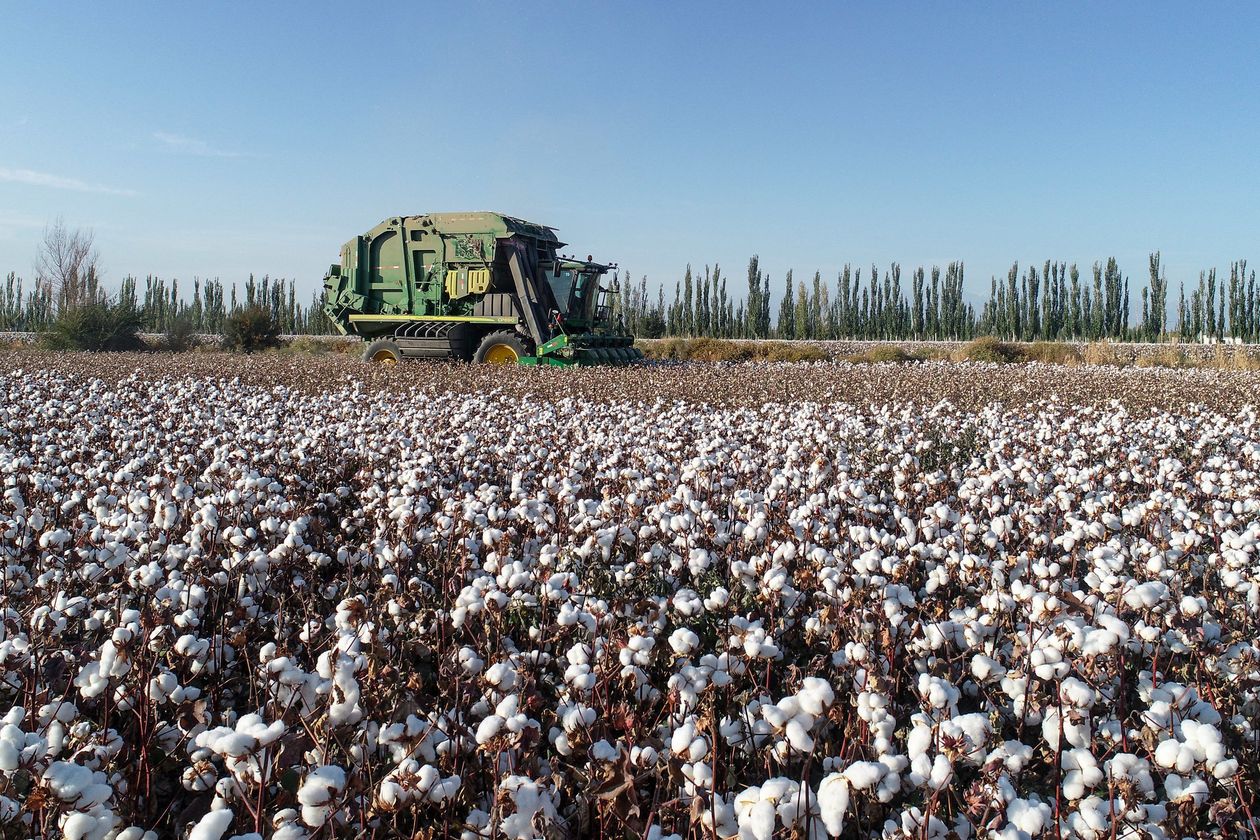Coercion in Xinjiang’s Cotton Fields
The West needs wider controls on Chinese imports produced with forced labor.

‘In the past, my lazy thoughts . . . were serious. Now, I finally understand that the happiest thing is to use the money I earn with my hard-working hands and my sweat.”
These are the words of a Uighur villager in China’s Xinjiang region who, in 2018, was forced into picking cotton by communist authorities. It’s hard to think these words are anything but propaganda. In a Uighur village in Payzawat County, officials entered every home twice and conducted “thought education” until enough pickers had been mobilized. In 2018 more than half a million ethnic minorities—from Kazakhs to Uighurs—were coerced into China’s cotton fields through Beijing’s “labor transfer” program.
These are the findings of my new report on forced labor in China’s cotton production published by the Center for Global Policy. The U.S. government recently banned all cotton and related products from a state-owned paramilitary entity in Xinjiang on forced-labor grounds, but the true extent of this injustice runs much deeper. Xinjiang’s entire cotton production is tainted with coercion.
Xinjiang is the largest cotton-growing region in the world, producing 85% of Chinese cotton and 20% of the global supply. Lavished with government subsidies, Xinjiang cotton has become central to global supply chains.
Xinjiang’s forced-labor system grew exponentially during the time when regional authorities also built “vocational training camps” in which as many as 1.8 million people have been imprisoned. Each year, Xinjiang municipalities inquire with cotton producers about their labor needs. Chinese officials then descend on local villages to conscript the workers. Government reports abound with “success stories” of officials who visit homes until family members “agree” to work, a process that involves “transformed thinking.”
Once the workers are secured, officials transfer them to the fields in tightly managed groups of 30 to 50 and oversee their work. One government document states that officials must “eat, live, study, and work together” with the laborers while continuously carrying out “ideological education.” A government report mandates that officials function like “security guards.” Another notes that minority cotton pickers are frequently checked on by authorities to see whether their “state of mind” is “stable.”
Since Beijing will never permit independent audits of working conditions, it is impossible to know how much of Xinjiang’s cotton production involves coercion. Based on my findings, it must be assumed that all Xinjiang cotton is contaminated by forced labor. In addition to the limited U.S. ban, governments around the world should consider a total ban on all products made with the region’s cotton.
That’s the most effective way to constrain the flow of cotton picked by hands that had no choice.
Mr. Zenz is a senior fellow in China studies at the Victims of Communism Memorial Foundation.

